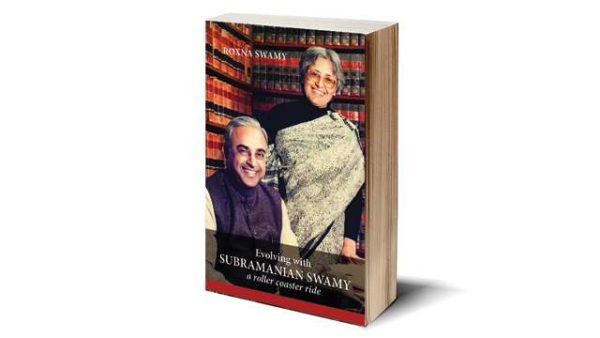With the Congress dominating the polity post-Independence, India never had an opposition leader to match the charisma and popularity of the Nehru-Gandhis, with the exception of Atal Bihari Vajpayee. For a brief period in the mid-1970s, however, socialist leader George Fernandes and Jan Sangh-backed Subramanian Swamy, with their knack to kick up a storm, caught the imagination of the youth. Both were icons of anti-Congressism. While Fernandes remained wedded to anti-Congressism till he bid adieu to public life, Swamy is a mercurial politician who has switched camps several times to remain in the limelight. While he led an anti-corruption crusade against former Tamil Nadu chief minister J Jayalalitha and dragged Congress president Sonia Gandhi into several court cases, he was also instrumental in mending fences between the two in order to topple the Vajpayee government in 1999.
With little political weight, Swamy remains an enigma. Who else better than his wife Roxna Swamy — a mathematician-turned-Supreme Court lawyer — to decode the puzzle of Subramanian Swamy?
The book is replete with indications of Swamy’s ambition of becoming finance and prime minister, and how intrigues in corporate and other influential circles have prevented him from fulfilling this ambition.
A darling of the RSS during the Emergency, Swamy was seen injecting confidence in the demoralised cadre against Indira Gandhi. On top of the police’s ‘wanted’ list, the RSS helped him avoid arrest. In Ahmedabad, the organisation deputed a young and humble swayamsevak to guide him, who would drive him on a motorcycle to the city’s famous fruit ice-cream parlours. That young man was none other than Narendra Modi, who after becoming PM brought Swamy back to the Parliament by nominating him to the Rajya Sabha.
Swamy is also credited with discovering Dr Manmohan Singh, who too became prime minister. As senior cabinet minister in Chandrashekhar’s government, Swamy was tasked with finding a person to handle economic affairs in the Prime Minister’s Office. Singh was then heading the South Commission in Geneva.
The book, however, has not been able to clear the contradictions around Swamy. Roxna writes that Swamy had consistently demanded the devolution of powers to Jaffna for a resolution of the Sri Lankan crisis. At home though, he has been a strident opponent of a similar devolution in Jammu and Kashmir and wants to abrogate Article 370 and Article 35 (a) of the Constitution.
Swamy went on a fast unto death to press his demand for an inquiry commission into the 1987 Hasimpura massacre, when 40 Muslim youth were killed in cold blood by UP Provincial Armed Constabulary. Though the culprits were acquitted in 2016, he is still pursuing the case. But the same Swamy also calls for dis-enfranchisement of Muslims and uses every occasion to hurt them with acerbic comments.
The book may not have deciphered the real Swamy or decoded his political mind, but it tells us that the mercurial politician can maintain a grudge for decades, finally getting back with a vengeance. From Vajpayee to P Chidambaram to RSS chief Raju Bhaiyya, they all know of this trait of his. The book is also incoherent, and lacks interesting nuggets. Instead of satiating the desire to know Swamy, it whets curiosity.



Leave a reply